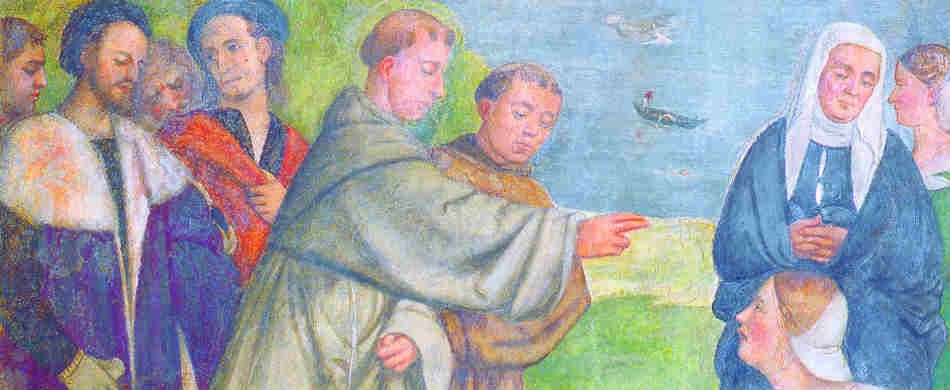LAST FEBRUARY I took two relics of St. Anthony to the diocese of Austin in Texas. I like these events because they allow me to meet innumerable devotees of our Saint, people who see me as the Saint’s travelling companion.
During these trips people often tell me of their friendship with the Saint of Padua, and how he helps them practically every day. Some of them also describe how this friendship arose in their family many, many years ago, and how it was handed down from one generation to the next.
Of the many people I met on this last trip, I was particularly impressed by the story of an elderly lady. She told me that, when she was a little girl, her 4-year-old brother banged his head against a stone step in their home and had lost consciousness. When the doctor arrived he declared the boy dead, and at that point her distraught mother ran into her bedroom and grabbed a picture of St. Anthony. She then placed it over the boy’s chest, crying loudly, “St. Anthony, save him!”
To the great surprise of the small crowd that had gathered around them, the boy began to breathe again and regained consciousness. In recounting this story the lady had tears running down her cheeks, and it was clear that the episode was still very much alive in her memory.
I have to admit that it was not the first time that I received a first-hand account of a person being brought back to life through the intercession of our Saint, yet every time I hear these impressive stories I am reminded of the passage from Matthew’s Gospel in which Christ says to the Apostles, “As you go, make this proclamation: ‘The Kingdom of heaven is at hand.’ Cure the sick, raise the dead, cleanse lepers, drive out demons. Without cost you have received; without cost you are to give” (Mt 10: 7-13).
Everybody knows that an enormous number of healing miracles have been performed in Jesus’ name in the last 2000 years, and it is also well established that the Church has the power to cast out demons and has been exercising this power for centuries, but what about the mandate to ‘raise the dead’?
In the Gospels and in the Acts of the Apostles numerous miracles are described in which people are brought back to life, but were there other such cases after the early days of the Church?
This question must have aroused great interest in Fr. Albert J. Hebert, an American scholar who, drawing from ecclesiastical sources and the documents of beatification and canonization processes, was able to highlight some 400 cases of people who were raised from the dead in the course of the last twenty centuries.
Hebert’s book, Saints Who Raised the Dead: True Stories of 400 Resurrection Miracles, is full of surprises. The case of St. Ambrose (339-397) is well known. He was in Florence to consecrate the city’s basilica when the son of a friend of his died. Through his ardent prayers to God the saint was able to make life flow back into the young man. According to the chronicles, St. Martin of Tours (316-397) performed three miracles in which people were brought back to life. St. Patrick (385-461) was able to bring 33 people back to life, the highest number by any saint.
Of the 400 miracles that Fr. Hebert describes, those occurring in the second millennium are the best documented. All of the great saints were able to perform extraordinary miracles, among which are several involving people being brought back to life. Among these are, St. Dominic (1170-1221), St. Anthony (1195-1231), St. Ignatius of Loyola (1491-1556), St. Philip Neri (1515-1595), St. John Bosco (1815-1888)… and, more recently, even Archbishop Fulton Sheen (1885-1979). You may remember reading a couple of years ago that “the Vatican’s medical team unanimously approved the healing of a still-born baby as unexplainable by science, making a major step toward the beatification of the beloved American archbishop.”
Naturally all these miracles have nothing to do with the greatest turning point in history, the Resurrection of Christ, the event which gives us the certainty of our own resurrection when we depart from this life. Yes, Jesus died a human death and “on the third day he rose again,” but after his Resurrection he would not die again. He ascended into heaven – body and soul.
Therefore, brothers and sisters, as we celebrate Easter on Sunday, April 16, let’s not forget Jesus’ ultimate reassurance that death has fully been defeated, and that we will all be resurrected just as He was: forever.
Have a blessed Easter.




